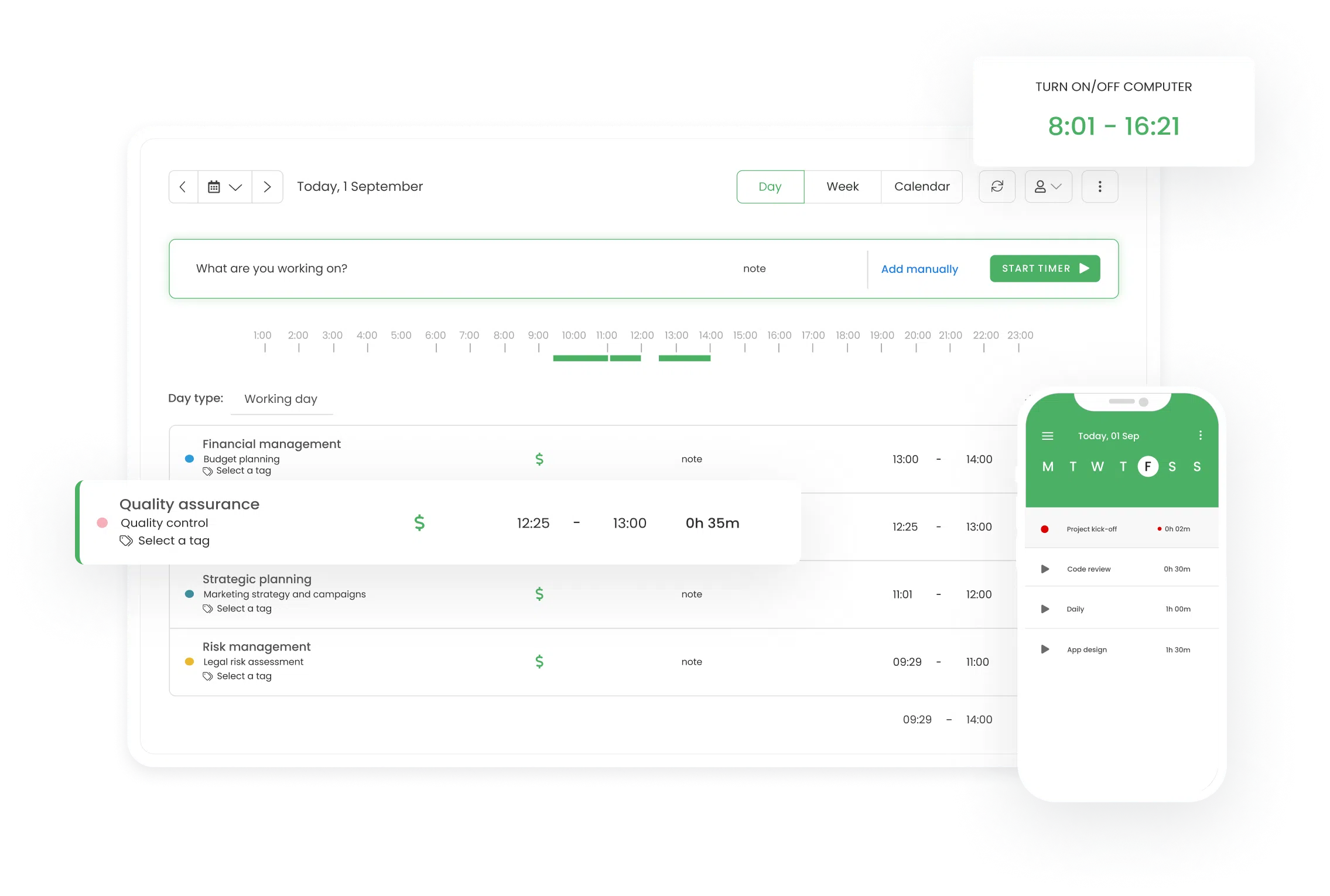How to Properly Make Time and Effort Reporting for Federal Grants
-
Kate Borucka
- September 17, 2024
- 4 min read

Federal grants provide significant funding opportunities for projects in various sectors, including education, research, public health, and nonprofit work. However, receiving a grant comes with specific responsibilities, one of which is time and effort reporting.
Hence, accurate documentation of time spent on federally funded activities is essential for compliance with government regulations and for maintaining the integrity of the funding process.
Here’s a short guide that’ll help you properly track time and meet all time and effort reporting requirements.
(Note: in this guide, we’re focusing only on the time and effort reporting and how to record it so you comply with the official regulations. For more info on Federal grants, check the official website – you’ll find the link below.)
What is Time and Effort Reporting?
Time and effort reporting is a process where employees working on federally funded projects document the time they dedicate to those activities. This reporting provides assurance that the actual effort expended by staff matches the committed effort described in the project proposal and budget.
Essentially, time and effort reports are nothing other than timesheets required for all employees funded with federal money who work on sponsored projects.
This system ensures that costs charged to a federal award are based on actual work performed, not on estimates.
What You Need for Time and Effort Reporting?
To comply with the uniform administrative requirements, you’ll need to follow certain rules. These are important so your sponsored programs don’t get canceled.
1. Actual effort report
No estimates are allowed; only actual hours worked that must be reported in timesheets. Hence, accurate time tracking is crucial.
Also, employees who are paid with federal grant funds must report all the activities they perform. And you need to document how much time was spent on specific tasks or projects.
If employees are performing activities as part of a cost-share agreement (e.g., a university’s contribution to a project), this must also be accurately reflected in time and effort reports.
Don’t forget about overtime, breaks, and other activities that are included in the sponsored project but aren’t tracked. It’s a total effort that is included in the compensation for an awarded-employee.
2. Performance measurement
Section § 200.301 Performance measurement of the document 2 CFR 200 specifies that “The Federal awarding agency must measure the recipient’s performance to show achievement of program goals and objectives, share lessons learned, improve program outcomes, and foster adoption of promising practices.”
Because of that, tracking performance on a sponsored project may be necessary as proof of time and effort during audits.
3. Financial management
Another thing important for proper grand management is administering finances (Section § 200.302). All federally-funded activities must be recorded in compliance with the Federal statuses, regulations, and terms and conditions. These must be specified and adjusted to the specificity of a sponsored award.
4. Internal controls
When given Federal awards, you need to control internal procedures, “establish and maintain effective internal control over the Federal award that provides reasonable assurance that the non-Federal entity is managing the Federal award in compliance with Federal statutes, regulations, and the terms and conditions of the Federal award.”
So make check-ups if all processes go as planned, and if there are any obstacles, address them appropriately
Also, if there are any differences in the budget, objectives and project scope, you need to request prior approvals from Federal awarding agencies for budget and program plan revisions.
5. Cost objective
Cost objectives are the specific activities, programs, projects, or other efforts for which the grant funds are allocated.
To ensure that the cost objectives of your sponsored project are properly used you need to follow the specific cost principles. So you need to be spending the grants on things and resources that are in line with sound business practices, follow your sponsor requirements, and document all costs and expenses.
6. Effort certification
Effort certification ensures that time spent on personal services or sponsored research is accurately reported and matches the employee’s Institutional Base Salary (IBS) or annual compensation. Either the employee or a supervisor, often the principal investigator, must certify that the reported time reflects the actual work performed.
Certifications typically cover specific periods, such as monthly, quarterly, or fiscal year-end, depending on the institution’s pay schedule. This process ensures compliance with institutional and federal guidelines. It’s important to maintain accuracy in compensation and reporting.
Key Regulations and Governing Acts
The Uniform Guidance, codified in 2 CFR 200, is a comprehensive set of rules and guidelines issued by the Office of Management and Budget (OMB) to govern federal grant administration.
Specifically, 2 CFR §200.430 focuses on compensation for personal services, outlining the requirements for time and effort reporting. It mandates that institutions receiving federal funds must maintain systems to accurately document employee time spent on grant-related tasks.
Additionally, you should follow the Davis-Bacon Act (ensures prevailing wage rates are met for federally funded construction projects, including wage reporting), and Federal Labor Standards Act (FLSA) which influences how to document compensation, particularly for overtime.
If you don’t comply with these regulations, you’ll be subject to financial penalties, and federal agencies may impose additional restrictions or bar institutions from receiving future funding.
Time and Effort Reporting for Federal Grants: Best Practices
Obviously, there is no better practice to properly report time and effort than to follow the key regulations. But to ensure you’re fully compliant and increase the chances for future grants, you can use the right system to help you professionally handle all the processes.
For example, TimeCamp—an automatic time tracker that helps to track the effort needed, create neat timesheets with accurate time logs, and prepare the necessary documentation for audits.

You can also use the tool for cost management—expense tracking lets you control matching funds (you can add expenses, attach receipts, and keep the evidence of costs incurred), and you can track billable and non-billable hours.
Reports provide you with analytics on performance so you can measure progress and monitor goals. TimeCamp also lets you track other duties for effort reports so you include all important data in your documentation.
TimeCamp is fully compliant with HIPAA and DCAA standards and can be a good tool for tracking time and effort.
Another thing is to communicate with your team, employees, or contractors so they know what to expect.
And the last important and best practice is to create clear policies (based on federal regulations) with precise guidelines. That way, you’ll prevent errors and potential negative consequences.
To Wrap It Up
The right tool can help you comply with regulations by providing you with accurate documentation for effort. As a result, not only will you track your time properly, but also increase your chances for receiving better projects that will make your more profitable. After all, when you’re granted federal awards, it says a lot about your credbility.
Get to know where your time goes with TimeCamp!
Track time in projects and tasks, create reports, and bill your clients in just one tool.


